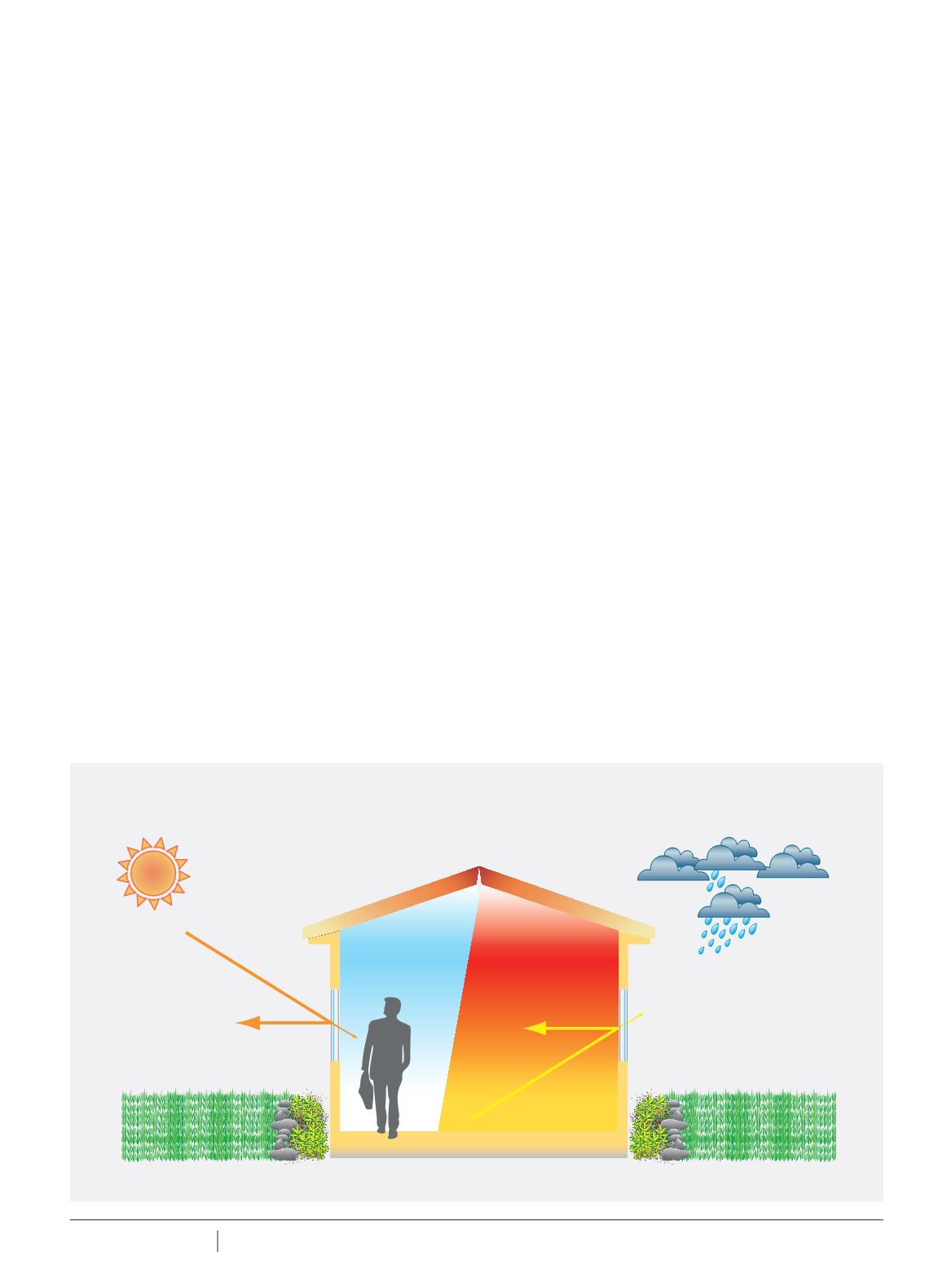

3 8
BUILDING CONNECTION Spring 2019
HIGH PERFORMANCE GLASS & ITS
PLACE IN DOORS ANDWINDOWS
I
n today’s built environment, glazing
does far more than keep out the
wind and rain, although these
have always been its primary function.
It has become increasingly important
to consider the design, selection and
installation of glazed elements. In terms
of energy performance, windows and
doors are key areas that need to be
heavily focused on during the design
and build phase of a construction.
While windows typically represent
less than 10% of the surface area of a
home, they can realistically contribute
to as much as 49% of the heat lost
during winter and as much as 87%
of the heat gained during summer.
This means that homes with ordinary
windows use up to a staggering 60%
more energy to heat and cool their home
than is necessary.
For many years, the effect of glazing
on energy performance, home comfort
and safety has been greatly under used
in Australia. One of the shortcomings
of glass is its relatively poor insulating
qualities. Poorly designed windows
and inefficient glass can make a home
too hot in summer or too cold in winter
and it increases the demand on air
conditioning and artificial heating.
Energy efficient glazing can
significantly reduce the amount of
heat that travels through windows. The
most energy efficient windows result
from a combination of both the right
frame and the right glass to achieve
superior energy performance. Energy
efficient windows will not only save
money on energy bills but will also play a
significant role in improving the overall
comfort of a home.
The emphasis on selecting the right
product to reduce heat loss in a colder
climate and reduce heat gain in a hotter
climate should be an important decision
to achieve greater comfort and energy
efficiency.
There are literally thousands of
energy efficient window systems
(including high performance glass)
available to choose from. Advances in
technology have made a host of new
and exciting glazing products available
including high performance double and
triple glazing systems, and spectrally
selective films and Low-E coatings to
name a few.
Low-E stands for low emissivity
glass. It is manufactured with the
Over the past few editions of Building Connection Magazine Gary Smith has spoken about the main
framing materials for windows and doors in Australia, including PVC, timber and aluminium. In this
issue he discusses the other main material of a window and door system, the glass with a focus on
high performance.
THE U-VALUE EFFECT
WINDOW WORLD -
GARY SMITH
















